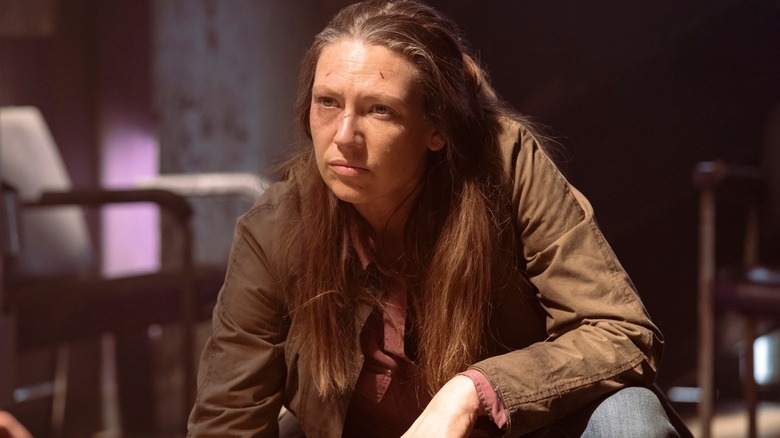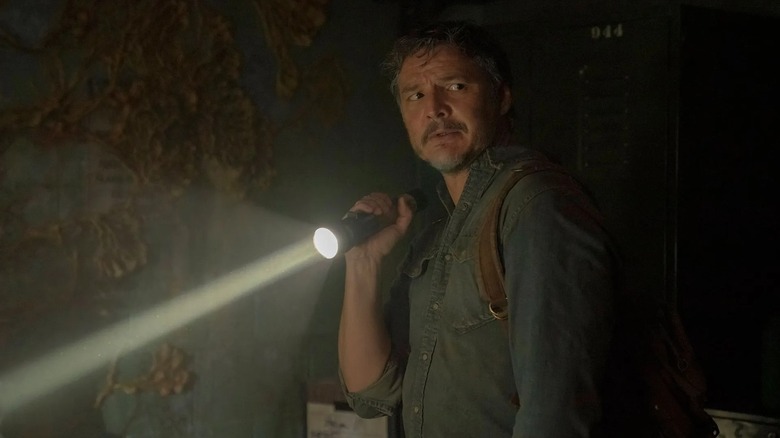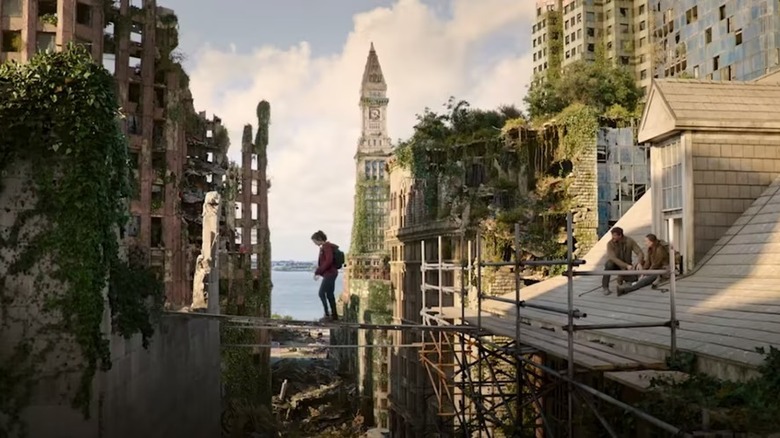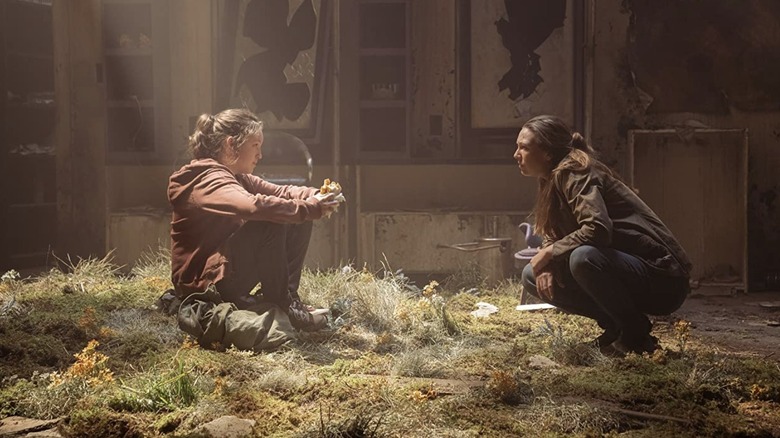Here's Why The Last Of Us Uses So Many Handheld Shots [Exclusive]
For fans of the original game, HBO's "The Last of Us" series feels like a gift that keeps on giving. We've all been burned by Hollywood's long tradition of doomed live action video game adaptations before. Even 2022's uninspired "Uncharted" film proved that adapting Naughty Dog's cinematic games to the big screen is not a simple, surefire task without the proper vision (even though Sony Pictures has deemed the blockbuster a hit).
Despite all odds, showrunners Craig Mazin and Neil Druckmann (who wrote and directed the original 2013 video game) have already proven this series' value as an adaptation of one of gaming's most beloved stories. What makes "The Last of Us" truly work as a fully imagined series, however, is that it makes full use of its new medium. There's no longer any direct interactivity or gameplay, but there's now plenty of room for more story, context, and worldbuilding to deepen the material for newcomers and hardcore fans alike.
But from a visual perspective, how does "The Last of Us" series build on what the 2013 game started? /Film's Valerie Ettenhofer spoke with one of the cinematographers of the HBO series, Eben Bolter, and asked about working with an established visual style from the games and the handheld look of the show.
"At the end of the day, Craig [Mazin] and Neil [Druckmann] have their sense of what the series is going to look like, and each of us as cinematographers just have to interpret and translate that," Bolter said. "So all of my conversations about the look, about the tone, about lighting were actually with Craig and Neil, the showrunners. So I did have flexibility to change things if I deemed necessary from the opening episodes."
'Letting flaws exist, and leaning into those flaws'
In video games, outside of cutscenes which are typically traditionally blocked and shot, the camera is often placed behind the protagonist's back, drawing the player into their field of vision. Although it allows full immersion into a character's singular perspective, it also is typically harder to frame important details, as the player has control over the camera and its movements.
"The Last of Us" is no different, and these gameplay sequences don't naturally translate into television. So, in addition to replicating the minimalist, organic "look" that "The Last of Us" had established in the game's cutscenes, there was also a need to fill in the blanks. Bolter explained:
"I think there are subtle differences, but again, 'The Last of Us' just has a kind of style that's inherent, and quite often it was about less is more. It was about a kind of cinematic naturalism. It was about lighting a room rather than a shot. And letting flaws exist, and leaning into those flaws."
There's a desolate beauty to "The Last of Us," as Joel and Ellie explore an America that has been reclaimed by mother nature. Man-made buildings are covered in vines, rust, and greenery. There's an ironic quality to the "naturalism" conveyed by the cinematography, where horrifying images such as dead clickers grown into fungus walls and Cordyceps tendrils sprouting from moss are shot with the same normalcy as an abandoned suburb or fallen city.
The handheld look perfectly translates video game perspective
In both "The Last of Us" games, and especially in tense gameplay moments, there is a subtle amount of camera shake that happens when the player performs an action such as sprinting, aiming, and shooting. This is a deliberate stylistic decision that gives the game the illusion of a handheld camera. In the show, that handheld aesthetic is fully realized. As Bolter mentioned, the show's overall "look" is born from slight imperfections, and the handheld style balances the beauty and darkness of the show perfectly:
"I think on the handheld side of things... handheld was discussed a lot. I mean most of the show is handheld, and there was a sort of visceral, grounded, organic reason for that. But we didn't want to be 100% beholden to that, so there are a few shots in my episodes that aren't handheld. That being said, I'd say 80, 90% is still handheld. And that just leans into that sort of organic, allow characters to move and push and pull you around."
Though viewers of the show are not able to manipulate the camera and explore the spaces and sets around them like they can in the game, the handheld camera helps create a similar sense of immersion and depth to each scene. There are moments in the show where something will be framed to bring attention to small staging details,, like Ellie crossing the bridge and Joel glancing at his watch — but for Bolter and his fellow cinematographers on the show, atmosphere came first.
How to adapt a video game? Capture the feeling of playing one
Bolter explained:
"We didn't want to be too perfectly composed... We didn't want the camera to be too much of a character. We didn't want to be slowly pushing in on a big, important line. That just felt too cinematically contrived. We wanted the camera to sit back a little bit and be a bit more observational, and react, and be the audience, and occasionally make mistakes. So that style was very important to Craig, and like I said, Craig was the one who really we were beholden to in terms of the tone."
Though "The Last of Us" is one of the best video game adaptations yet, there are currently working filmmakers, such as Dan Trachtenberg, who have been utilizing video game storytelling philosophies to inform the look and feel of their movies. Trachtenberg's career launched when he directed the "Portal" fan film, "Portal: No Escape," which has its own approach to translating the singular perspective of a video game to film — a directorial style which had also informed his next two feature films, "10 Cloverfield Lane," and the "Predator" prequel, "Prey."
For future filmmakers trying to capture the feeling of video games, take note of Craig and Druckmann's rough and naturalistic approach, or Trachtenberg's expert use of meticulous detail and perspective. In order for the video game adaptation to properly evolve and find success, one must consider how to properly translate the essence of these games back into a strictly audiovisual experience.



